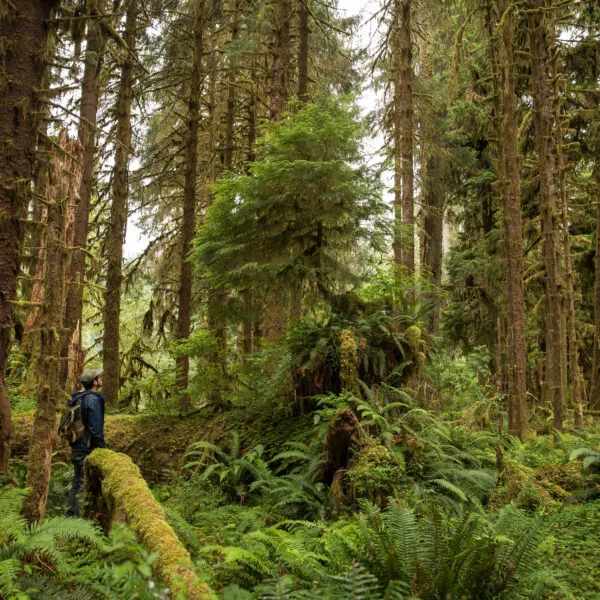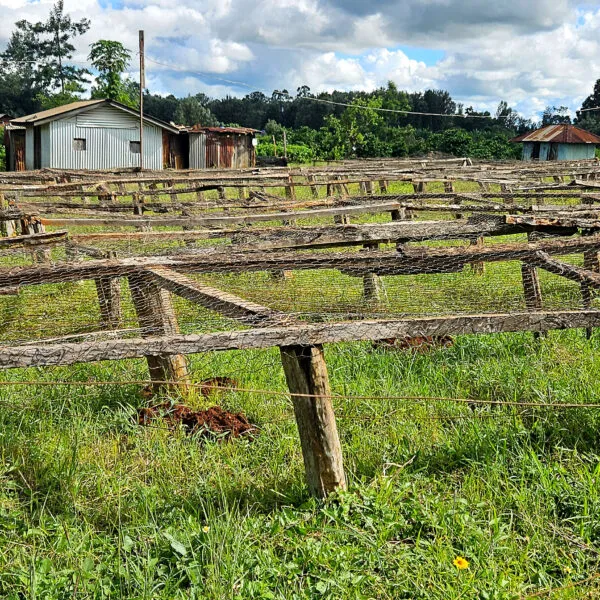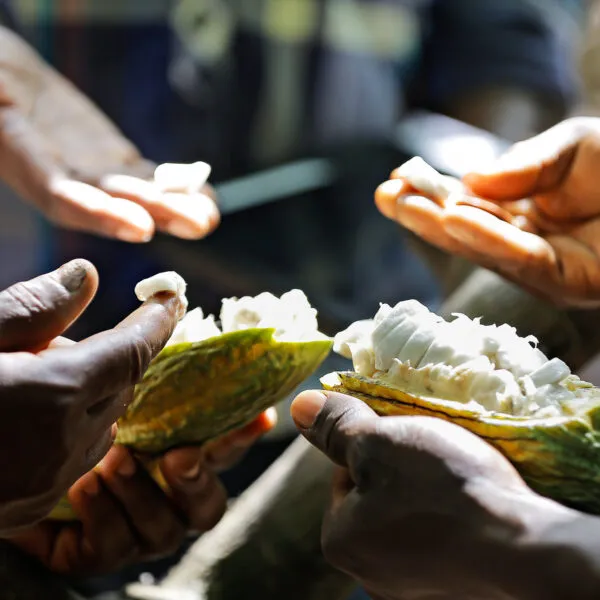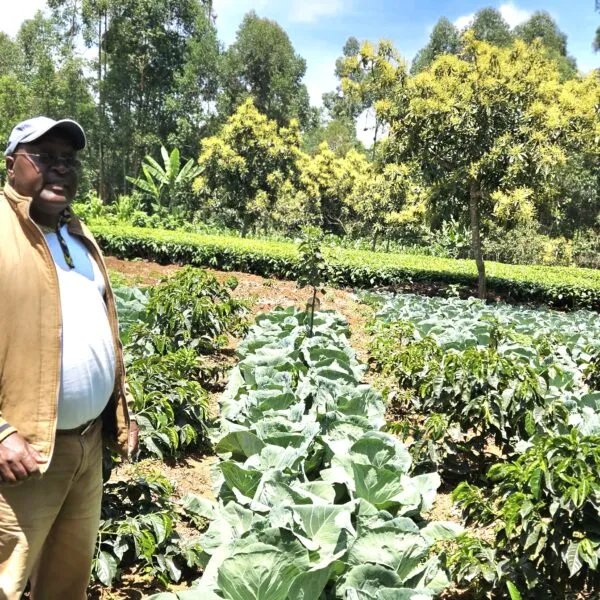Throughout his career, Kwame Osei has shown that sustainability benefits from two types of “chemistry”: the research-based science, and the kind that builds effective teams. In his new role as the Rainforest Alliance’s senior director of global programs, he harnesses his own unique blend of technical knowledge, extensive field experience, and inspiring leadership to guide the implementation of our 2030 strategy.
In his previous role as our country director for Nigeria and Ghana, where he is based, Osei has made it his priority to forge strong working relationships with cocoa farmers, as well as corporate leaders, government officials, and other key partners. His approach: making meaningful connections through empathy, openness, and trust.
Hear directly from Osei on reaching ambitious goals, why we must center farmers and rural communities, and the need for long-term sustainable finance.
How did you discover your passion for sustainability?
Kwame Osei: In 2009, I got a job at the Louis Bolk Institute, a research center for sustainable agriculture, nutrition, and health. Before that, much of my experience was in research on water management. This was linked to sustainability, but we weren’t calling it that—it was about engaging farmers to produce “clean” vegetables. My role as a project leader at Louis Bolk enabled me to connect to a sector, a supply chain, and to the farmers themselves through training and capacity building. In doing so, I was able to influence people to think differently about agriculture, in a way that I couldn’t do with research alone. So that became my passion: to see real change in action.
“So that became my passion: to see real change in action.”
You have spent the past 10 years at the Rainforest Alliance serving as director of Ghana and Nigeria—and will now play a key role in the implementation of our 2030 strategy. What’s top of your agenda?
K.O.: With the new strategy, we have the chance to make a lasting impact in the lives of farmers. There are big issues that we can’t solve with certification alone, so we are going beyond it with our ambitious regenerative agriculture work and new Thriving Landscapes program. By restoring the soil to increase productivity, regenerative agriculture goes a long way to improve livelihoods and address climate resilience for farmers. And we promote thriving landscapes to drive change beyond individual farms to entire landscapes.
You recently obtained a PhD in Environmental Chemistry. How does it inform your work today?
K.O.: In my PhD, I looked at the pesticide usage by cocoa farmers and their views on it. There has been a lot of training on the harmful effects of pesticides on both people and nature, but the farmers are still not fully getting it—so where’s the disconnect? I published a research paper that concluded that a bottom-up approach is necessary to our work.
Companies and NGOs often tell farmers what they should do instead of asking them for the solution. I’m passionate about understanding the farmers’ point of view and bringing a scientific angle to it that can inform policy. It’s fulfilling to me to contribute from the research side to support everything we’re doing at the Rainforest Alliance.
Is there a place you like to go to connect with nature?
K.O.: As a matter of fact, I have a nice garden at my house. There is also a public forest close to my home, Bobiri forest, that I visit when I want to relax. You can find many different butterflies and trees there. When the Rainforest Alliance global leadership team came to Ghana, we spent a day in the forest and had a lovely time.
What career highlights are you particularly proud of?
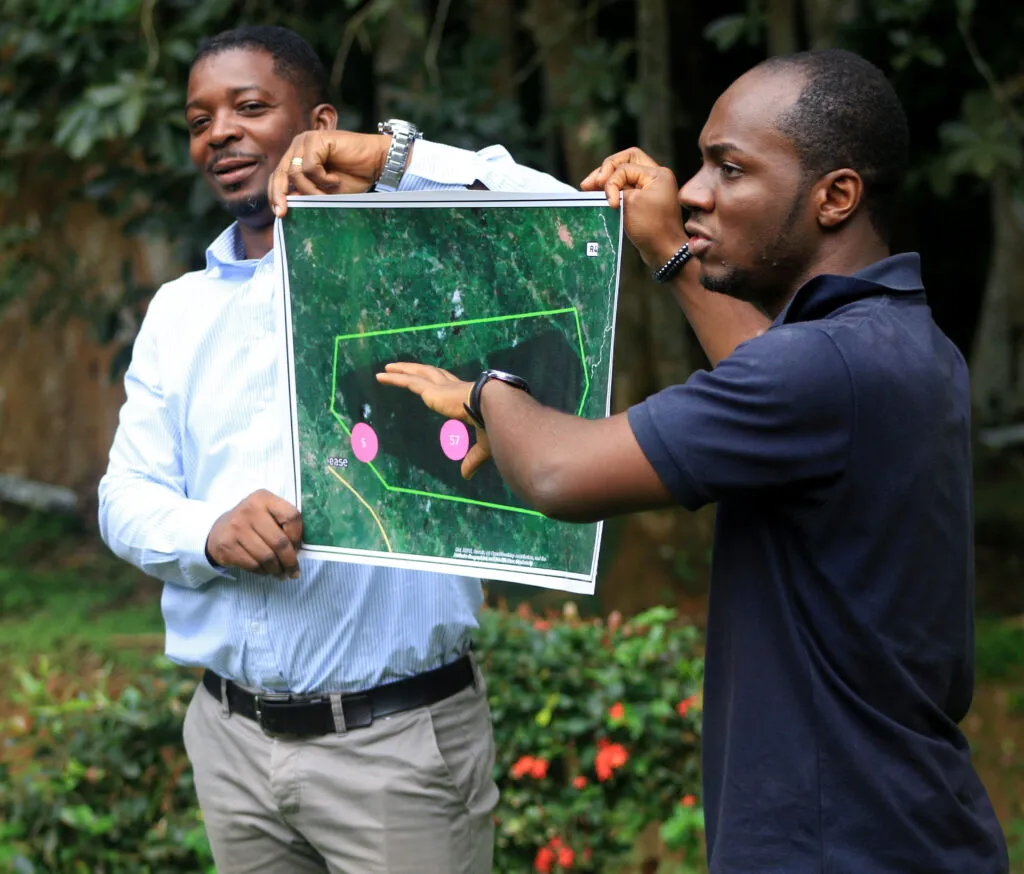
K.O.: Having worked in sustainability for quite a long time, one of my biggest successes was convincing a very large cocoa group of 100,000 farmers to strive for, and attain, Rainforest Alliance Certification in 2018.
What is fulfilling for me now is staying focused and disciplined. By doing so, I have come a long way in my career—first as an agricultural trainer, then as a project officer, director, and now senior director. My team in Ghana is happy to see how far I’ve come, and it has been wonderful to see many of them also develop their careers and achieve global roles. We’re all proud of what we have achieved together. Ultimately, I believe that if we work together and stay focused, we can achieve amazing things.
“I’m passionate about understanding the farmers’ point of view and bringing a scientific angle to it that can inform policy.”
What do landscapes initiatives need to be successful?
K.O.: When working with farmers and forest communities on regenerative agriculture or sustainable landscape management, it’s essential to have a strong governance structure in place. One that is community-led, like our Landscape Management Board (LMB) in Sui River, Ghana. We have a strong alliance in this region, working with farmers, district officials, partner NGOs, and Olam Food Ingredients (ofi) to protect and restore healthy forest ecosystems and increase climate resilience. We are driving real change here because farmers are leading, with the Rainforest Alliance facilitating, and with active participation from the private sector.
To take this to the next level, what we would like to see is more long-term commitments from buyers and donors. The cycle of donor-funded projects is typically two to three years, and donors guide the direction of these projects. If we want to reach impact at scale, then we need sustainable finance mechanisms in place and a focused strategy. When a donor or company partner commits to a region for 10 to 20 years and works with farmers and forest communities to utilize all our interventions, then we can measure progress and see a lasting impact. Going forward, the Rainforest Alliance will set the agenda, set the pace, and bring donors on board to collaborate so we can do what is best for the Sui River landscape.
“When a donor or company partner commits to a region for 10 to 20 years and work with farmers and forest communities to utilize all our interventions, then we can measure progress and see a lasting impact.”
What have you learned from farmers over the years?
K.O.: What I have learned is that we need to put farmers at the center of our work. We must view the relationship between farmers and our organization as a mutual exchange. This gives farmers the opportunity to share their stories. Not only will this help us strategically improve our interventions, but we can also take their concerns to the national and international levels for high-level impact.
When you think about the road to 2030, what impact do you hope to have?
K.O.: I want to “think big”—to take the approaches we know work and scale them up to reach more farmers, more hectares, more countries. We’ve set ourselves a goal of reaching 100 million rural producers by 2030 and I don’t think that’s too ambitious, I think this is our time. The Rainforest Alliance has the numbers, the expertise, and the capabilities. That is why I’m personally very excited about our new strategy. I firmly believe that if we all come together and we have the same common goal, we can create a better future for people and nature.

